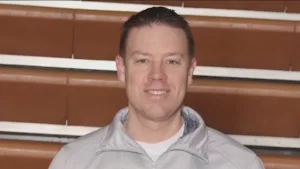Student absences rise, attendance hits new low
March 15, 2019
For senior Anna Jones*, attending school quickly became the means to an end. Her attendance patterns progressed from missing a day a week as a sophomore to entire weeks as a junior, and eventually in her senior year, Jones stopped coming to school entirely. But Jones didn’t drop out of school— in fact, she is still attending prom and walking with her graduating class.
Chronic absenteeism, or truancy, which is typically defined as a student missing a significant portion of the school year with or without a valid excuse, is not unique to Jones’ case. In the 2017-2018 school year, 12% of DGN students were labeled as chronically absent by the Illinois State Board of Education Report Card.
The rise in absences has not gone unnoticed by administrators and staff. A staff survey sent out by administration this school year found that 78% of teachers believe there is both an excused and unexcused absence problem.
“It’s an overwhelming sense of kids missing more,” Associate Principal for Staff and Students Kelly Zuerner said.
Attendance data is being analyzed by an Attendance Research Action Committee made up of staff, teachers, and administrators who are attempting to identify some type of trend in absences, but with little luck.
The formation of the committee comes from a need to review school attendance practices for the Every Student Succeeds Act (ESSA), which grades each school based on several measurements of student success, attendance being one of them. ESSA encourages schools to shift discipline methodology from “find and punish” to “identify and support”.
“We’re just diving into it and looking at any correlations to try and figure out where we can place more interventions to help our kids,” Zuerner said.
Upon analyzing attendance patterns of students based on gender, grade level, GPA, AP students, IEP/504 students, and several other groups, the committee found little to no correlations.
“There isn’t one factor that I can put a finger on that says ‘okay, kids who have this are more likely to be [absent],’” Zuerner said.
With no commonality in attendance patterns, administrators, staff, and teachers are left with nothing to pinpoint the increased absences to. It’s not due to an increase in hospitalizations, which only account for approximately 18% of the 16,365 excused absence days from the 17-18 school year.
According to Jones, the cause of student attendance problems may be something unmeasurable.
“I feel as if I am trapped in school,” Jones said. “I go to school when the sun is rising, and leave school when it’s dark, so I feel like my whole day is basically gone and wasted for many months out of the year.”
Jones says that school creates high levels of pressure and anxiety, and attending every day became too much. She still wants to graduate high school, and is currently taking online courses and working with her counselor to make sure she meets the graduation requirements.
“In my experience, my counselor has been incredibly supportive and is really working with people outside of my school life to help me out,” Jones said.
Previously, students whose lack of attendance required intervention could be issued a $100 truancy ticket, but due to a change in state truancy laws, the tickets can no longer be issued to students.
School Resource Officer Jonathan Lyerly said that he can issue a truancy ticket to the parent of a student, but not directly to the student.
“Studies have shown that the reason for the kid being truant and not coming to school is that there’s probably something going on at home that’s leading to the student not coming,” Lyerly said.
Despite the rise in absences, the number of truancy tickets issued over the past three years has remained consistent, since it has only been used as a last resort method.
“[The deans] try everything they can before they even get me involved,” Lyerly said. “Unfortunately, school’s not for everybody, and sometimes kids just don’t like school and don’t want to come.”
Jones feels as though there is an easy way to increase the motivation levels of students and ease the anxiety and tension that the school environment can often create.
“Off-campus lunch, early release for juniors and seniors. It would allow a little bit of freedom and trust with the student population,” Jones said.
Jones also praises off-campus programs that are offered, like TCD or Intro to Teaching, and wishes more of these opportunities were available.
“They allow students to go out and do what they’re passionate about, where other classes it’s a 50-minute lecture and that repeats eight times,” Jones said.
Unknown to Jones, there are already efforts in place to make some of these changes based around the idea of “blended learning”, a methodology that would require students to be in front of the teacher a smaller number of times each week, similar to how block schedules function.
Zuerner said that some of these changes will come along with the new renovations as part of the Master Facility Plan. The commons area would allow more students to freely work on projects, and ID’s could be scanned and used to record attendance all around the building, creating a similar feel to that of a typical college campus.
“There’s so many endless possibilities,” Zuerner said. “I don’t think it’s best to be out of a class, I don’t think it’s worse to be out of a class— I think it’s different.”
Jones admits that it’s not just anxiety keeping her away from the school building.
“There is a factor of laziness if I’m going to be honest. I do like to sleep in and I will watch some shows and stuff,” Jones said. “The school system isn’t for me personally, I can’t stand to be somewhere for eight hours straight with very little time in between to be my own person.”
Zuerner and the Attendance Research Committee are at the beginning of their exploration into attendance patterns and will continue to look into how they can further help students, but ultimately accountability falls on the student themselves.
“It’s your choices to want to earn that education that you so rightfully deserve,” Zuerner said. “They’re hurting themselves, really.”


























